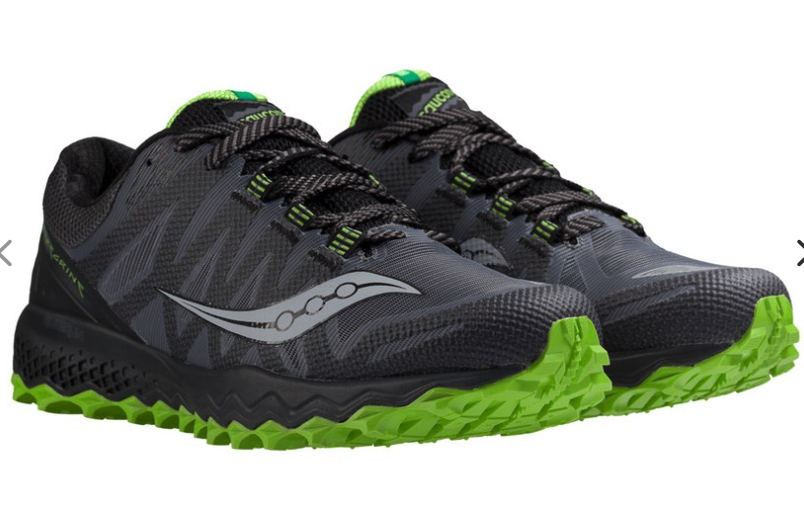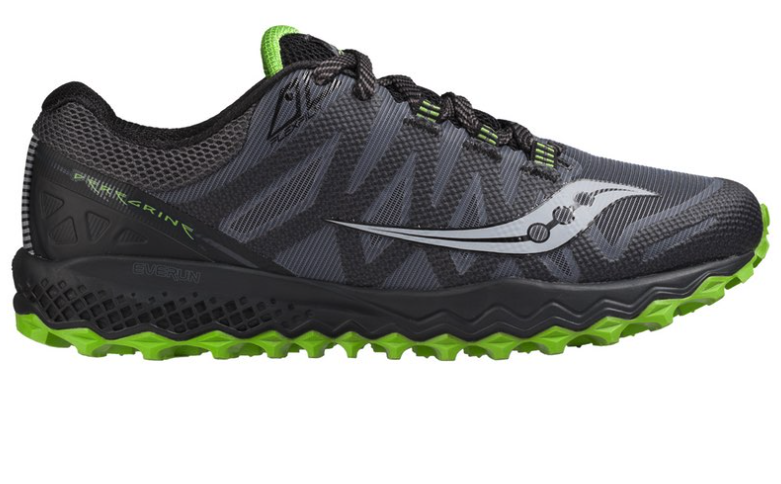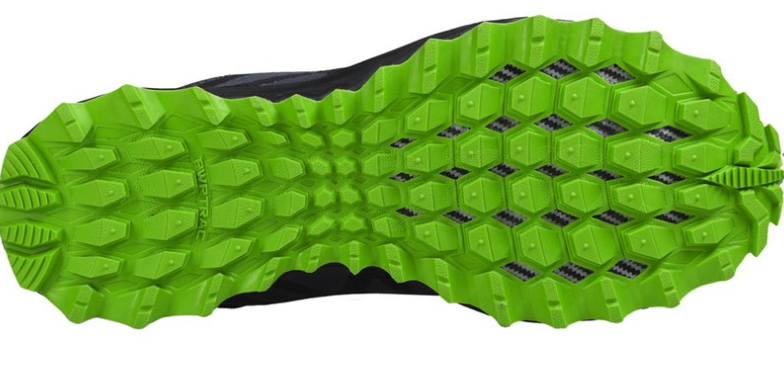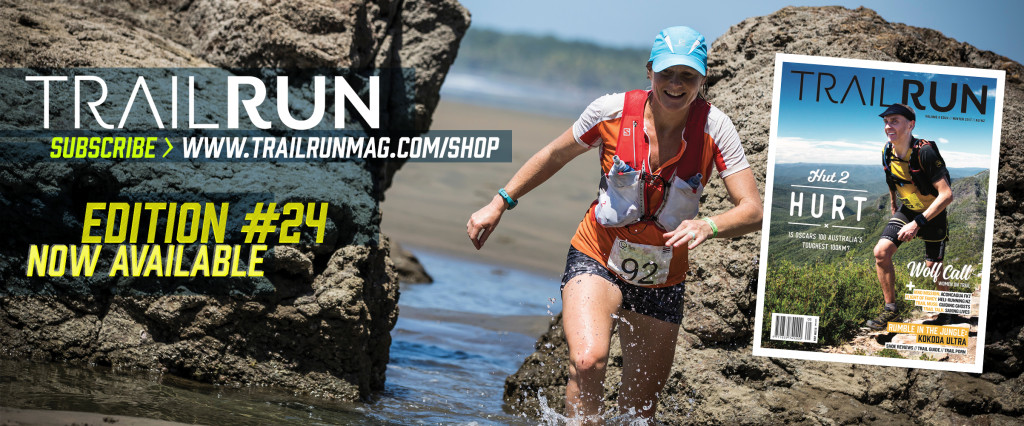Seventh Heaven: I can murder a shoe. Quickly. Might be my preference for technical mountain trails that rip shoes to shreds in a flash. Or could be that I bash and crash through the bush rather indelicately. Maybe it’s just that I’m not great at post-run cleaning and poncy pandering once the shoes are back panting on the doorstep.

Whatever the case, my trail shoes quickly go from shiny and sexy out of the box to grubby and grizzly examples of footwear. Some stand the test for a few years. Other disintegrate like shattered shale. Not Saucony’s latest iteration of the popular Peregrine nameplate, which suits me to a tee. They look like they want to get instantly grimy and then stay grubby for the remainder of their lives (which with me they most certainly will).
The ‘Run Anywhere’ mantra emblazoned on the inner heel I take literally and punch them through the mud, grit, grime and grade-A mountains of Tasmania to see if the Peregrines are (i) as comfy as they have ever been and (ii) a little hardier than they have been, which they need to be, specifically in the construction department.
While iteration means change, it’s not always presented in bunch loads when it comes to products that are already proven to get the job done – a new colourway here, an extra little swoosh there. But sales cycles need points of difference to move more units. And so the boffins look to minor adjustments to massage the performance outcome, perhaps whack on a new proprietary clap-trap label; an injection of ‘all-new technology’ and thus claim a reason for punters to upgrade.

The Sevens essentially haven’t moved on much from the Sixes. Nor did they really need to in terms of their excellent comfort, grip, and all-round, all-terrain performance. But the toe guard construction needed to be fixed. Surely there’s a mega-super-glue that will do the job these days? On the Six, nope, not present. Consistent tales of the toe guard coming unstuck abound. Did it matter? Not really, to performance at least, rather it was just an annoyance.
On the Sevens, the sole unit is exactly the same (great lugs, awesome grip, good durability). But the toe guard now sticks on to a different form of forefoot, a TPU plastic and textured one, which seems to be holding much firmer. No flappy toe guard. Yet. Sadly there are signs…
Dammit! Because in all other regards, the Peregrine again flies stratospheres above a lot of other trail shoes in every other aspect.

That TPU toe-guard is part of a new, larger, all-encompassing Exoskeleton wrapping the upper up for superior hold and protection (the Six had ‘FlexiFilm’). Underpinning the TPU is a super-fine mesh – great for evacuating sweat and water, but handy at keeping out the grit, too.
In general I’d say the upper is slightly roomier in the forefoot than its predecessor; but I have an average size foot, so they hit a good sweet spot that allows some toe wriggle and splay, but still keeps things secure and confident as my foot starts dancing along technical terrain. A slightly thicker heel cuff is soft yet firm (you know what I mean) for good hold-in. The lace eyelets are different from previous delivering good tension directly to the Exoskeleton – another improvement mild but noticeable.
Unchanged technology albeit expanded from the Six is the EVA Everun midsole, which stretches to full length in the Seven (it was only a heel insert in numero six). The idea is that it will increase energy return, cushioning “every footstrike with resilience and energy”. ‘Resilience’? Hmmmmm…weasel word alert. Anyway, notice much difference? We’re unsure if we can notice the difference between iterations (it was always a comfy ride anyway), but the cushioning is firm enough to give decent proprioception feedback, yet (cough) ‘resilient’ enough to run long on harder surfaces. Despite being a visually chunkier shoe (you can see it growling), its lightweight and feels fast and responsive – enough for most runners, perhaps a little dull for those seeking truly intimate contact with Mother Earth.
The 4mm offset wedges out between 21.5mm heel and 17.5mm forefoot, giving a minimalist drop matched to a moderate, more traditional stack height.
The PWRTRAC outsole with EBO rockplate is unchanged. The plate is bombproof giving protection from the sharpest teeth of any rocky trail, while not deadening trail feel overly. The stand-out lugs are aggressive and quite simply some of the grippiest on the market for technical mountain terrain be that loose, boulder-strewn, gravel packed, dirt dusted or otherwise – and they shed mud pretty well for a grip monster.
Further, the rubber boasts above-average stickiness in slick wet and on dry, smooth surfaces – usually a weak point for big-lug shoes.
All things considered, if I do end up murdering these shoes it won’t be out of anger – I’ll love them to death. And at least I can comforted in my loss knowing that they will have earned their right to pass through the pearly gates of trail shoe heaven, as a saintly wear they are.
THE LOW DOWN
Great for: rough, bitey trails, steep gradients, loose surfaces, snow and mud, technical, mountains, longer distances, grip, versatility – a great all rounder.
Not-so-great for: they’ll handle anything but if you had to nit-pick, door-to-trail runs with smoother, hardpacked surfaces (although even then, they are pretty damn good); trail feedback (again, not bad, just not super sensitive); thin footed runners
Test Conditions: mostly technical singletrack, both rocky and soft, leaf littered, dry, and wet, taken on a 100km tour or Tasmanian trails
Tester: Chris Ord, Trail Run Mag editor
Tester Mechanics: mid foot striker, tends to more technical style running
RRP: AU$220
Website: www.saucony.com.au
Conditions: shoes were provided for wear test by Saucony Australia











